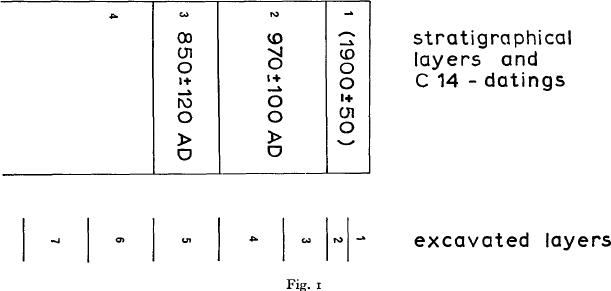Article contents
Pieces in vertical movement—a model for rockshelter archaeology
Published online by Cambridge University Press: 27 May 2014
Extract
In 1973, excavations were carried out in a rockshelter called River Rockshelter in Laikipia District, Kenya (the results will be published in AZANIA). The archaeological deposit was c 80 cm thick and contained an abundant lithic material belonging to a Late Stone Age industry. The deposit was excavated in seven layers each 5–15 cm thick. The stratigraphy was as follows (fig. 1):
1. 0–10 cm, brown, loose fine-grained earth;
2. 10–35 cm, brown, hard, medium-grained soil with stone slabs;
3. 35–50 cm, greyish brown, hard gravel with small stone slabs;
4. 50 cm + grey, hard gravel.

Stratigraphical layers, radiocarbon dates and excavated layers from River Rockshelter. Vertical scale 1/10.
- Type
- Research Article
- Information
- Copyright
- Copyright © The Prehistoric Society 1977
- 8
- Cited by




